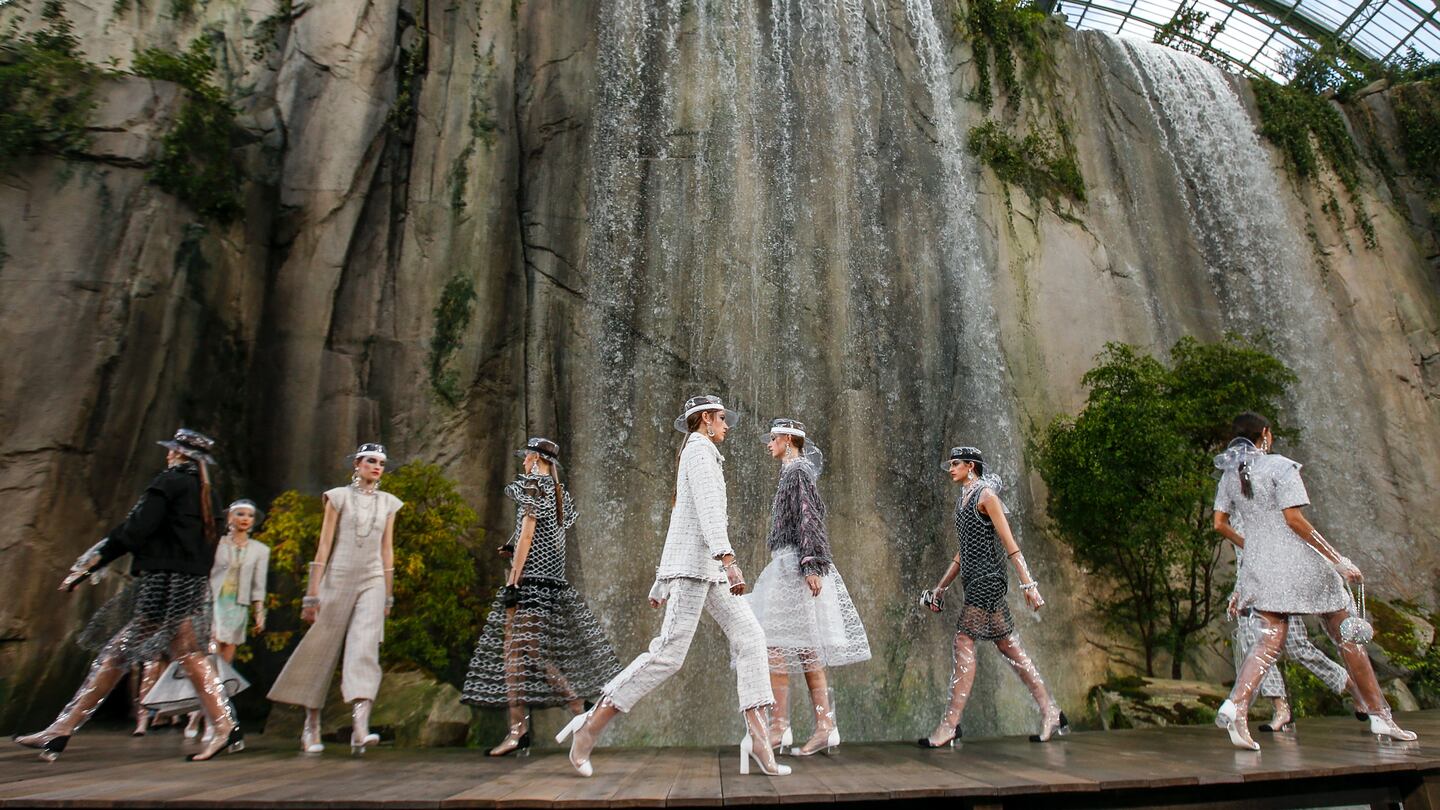
The Business of Fashion
Agenda-setting intelligence, analysis and advice for the global fashion community.

Agenda-setting intelligence, analysis and advice for the global fashion community.

LONDON, United Kingdom — Last August, a coalition of more than 30 of the world's biggest fashion companies presented the G7 summit with a major new climate commitment.
The Fashion Pact was light in detail but promised big ambitions, bringing together an unusually varied group of industry players on an unusually high-profile public stage.
Over the past year, companies including Burberry, Chanel, Farfetch, Kering and Ralph Lauren have collaborated at the CEO level to establish a series of targets to mitigate fashion's impact on climate, biodiversity and oceans. The group's numbers have swollen too, nearly doubling in size to more than 60 companies. The Fashion Pact says its signatories represent around a third of the overall industry.
In its first update published Monday, The Fashion Pact announced seven quantifiable, time-bound targets that included initiatives to reduce emissions, plastic packaging and the impact of raw materials within the fashion industry. It also placed a fresh emphasis on the importance of protecting biodiversity. Among other things, signatories commit to source 25 percent of their materials from lower-impact sources and eliminate plastic that is defined as problematic or unnecessary in packaging by 2025. By the end of this year, they should have established individual biodiversity blueprints.
ADVERTISEMENT
The new targets come at a time of accelerating urgency for the fashion industry. The sector is a significant contributor to the climate crisis, accounting for about 4 percent of global greenhouse gas emissions, according to a recent report by the Global Fashion Agenda and McKinsey & Company. At the same time, it's under mounting pressure from consumers and regulators to become more sustainable, in recognition of an increasingly tight time frame to meet international climate goals.
“We are on an urgent deadline, we need to show that we have impact, and we need to act now,” said Eva von Alvensleben, The Fashion Pact’s executive director and secretary general.
The pact has attracted an unusually large cross-section of companies, including luxury brands like Chanel, who rarely participate in such industry initiatives. One factor in gaining broad participation from French brands was the encouragement of the government, but another was a growing realisation that no one company can tackle the challenges The Fashion Pact aims to take on, said Chanel's Fashion President, Bruno Pavlovsky.
We are on an urgent deadline, we need to show that we have impact, and we need to act now.
"It's quite important to be together; sometimes we are competitors, sometimes we are not talking about the same kind of product, but we are using the same materials," he said. "For me, it's a new responsibility, and all together we have to understand this new responsibility."
The Fashion Pact builds on a long list of industry initiatives that have generated lofty goals but historically resulted in limited tangible change. However, the group points to backing from top executives as a signal of the industry’s commitment. While meeting the organisation’s targets is voluntary, it will publish progress updates on a public dashboard of key performance indicators. Perhaps most compelling is the fact senior executives are increasingly talking about sustainability as a business imperative.
"If you want to exist in 20 years and incarnate ultimate luxury, for me there is no doubt we have to be very active on these topics," Chanel’s Pavlovsky said. “One day customers will stop buying brands which are not doing the right thing.”
At its current stage, the organisation is focused on accelerating existing efforts, while teasing out relevant plans and targets for less-developed areas, such as fashion’s impact on biodiversity.
“We are at the beginning of our journey,” von Alvensleben said. “It is great to see the commitment that has been done, we don’t see this as a single campaign but a rolling [initiative].”
Related Articles:
[ Kering Chief to Present Industry Sustainability Pact to G7Opens in new window ]
[ Chanel’s Sustainability Financing, ExplainedOpens in new window ]
[ How Fashion's Sustainability Targets Measure UpOpens in new window ]
The fashion industry continues to advance voluntary and unlikely solutions to its plastic problem. Only higher prices will flip the script, writes Kenneth P. Pucker.
The outerwear company is set to start selling wetsuits made in part by harvesting materials from old ones.
Companies like Hermès, Kering and LVMH say they have spent millions to ensure they are sourcing crocodile and snakeskin leathers responsibly. But critics say incidents like the recent smuggling conviction of designer Nancy Gonzalez show loopholes persist despite tightening controls.
Europe’s Parliament has signed off rules that will make brands more accountable for what happens in their supply chains, ban products made with forced labour and set new environmental standards for the design and disposal of products.